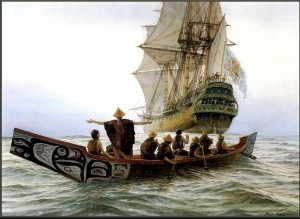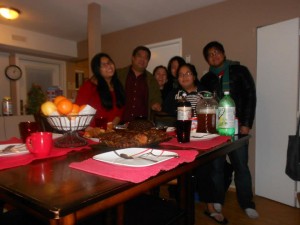Assignment 3:5 – “That Coyote Is Really A Crazy Clown”
2. Coyote Pedagogy is a term sometimes used to describe King’s writing strategies (Margery Fee and Jane Flick). Discuss your understanding of the role of Coyote in the novel.
“Because Green Grass Running Water is populated with both subtle allusions and overt references to a multitude of characters from popular culture, it is no surprise that students should, at first glance, attempt to understand this Coyote via the attributes of a cartoon character from their childhood viewing of American television (and there is little doubt in my mind that this first impression is one King would like you to think about).” – Paterson, ENGL 470A
There’s something about Coyote that I’d like to relate to Wile E Coyote in a sense that yes, he is a trickster and King seems to present him as the Native version of a God, and Wile E Coyote creates and builds contraptions to capture and control the Roadrunner, but it all has its consequences and downfalls. He can create earthquakes but it caused the dam to burst, his abilities with singing and dancing destroys the structures he created and brings upon terrible rain and storm upon everyone. Much like Wile E, who has the power to create and put up the traps, still brings forth destruction (mostly to himself). With that much power, I think King is trying to showcase, comes a great responsibility and production of balance. Coyote’s creations has its negative effects, bringing his actions into a circle from good to bad, beginning to end, positive to negative. It’s a representation of how the Aboriginals value the symbolism of balance through a circle.
“Circles are part of the natural order of creation – from the water cycle to the seasons to the cycle of birth and death – and as such, the circle signifies transformation and movement. Aboriginal peoples in North America use the circle to illustrate their worldviews using models such as the medicine wheel, which illustrates the human journey through life and explains relationships between various aspects of creation, both seen and unseen. The circle is infinite and continuous. It is a way of understanding and explaining interrelatedness and interconnectedness (see Interconnectedness).”
This underlines King’s writing of the Coyote as the Native God. And his role as a trickster is not necessarily either an entirely good thing or bad thing, but a development of balance of his powers and creation. King also highlights the idea of retelling or updating the stories or mythologies in our world. From Christian to Native beliefs, King incorporates these different creation stories and revamps them a little, show how they can fix our world. The dam is a prime example. Coyote creates the earthquake that tears down the dam. He destroys what he creates. That beginning to end that, again, shows the balance. It shows the importance of balance in our lives. King somehow is able to tell us to break the dams in our lives, let that water flow down freely. And if something bad can come out of the good, then some good can come out of the bad. It’s a cycle, the way of life. It all comes to full circle.
The Coyote is King’s allusion to a mixture of both the Christian God that creates and the Native American God that practices though their unique dancing and singing.
Work Cited:
Paterson, Erika. “Lesson 3.2 Introduction to Green Grass Running Water.” ENGL 470A Canadian Studies Canadian Literary Genres May 2015. UBC Blogs. Web. 16 July 2015.
“Aboriginal Worldviews.” Dragonfly Consulting Services Canada. 2012. Web. 16 July 2015.
Ziccardi, Andrea. “Wile Coyote e Road Runner – Catapulta.” Online video clip. Youtube. 24 May 2011. Web. 16 July 2015.






